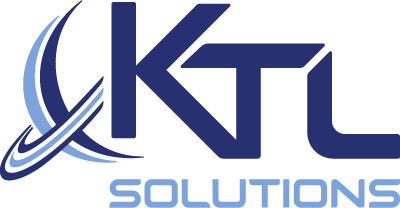How to do a Return transaction in POP (The other side to a RMA in GP)
Step one is to understand what type of return transaction needs to be done.
Return document types are as follows1:
· Return:
Step one is to understand what type of return transaction needs to be done.
Return document types are as follows1:
· Return:
In Microsoft Dynamics GP2015, there are several new features. One that may be useful is the Purchasing All in One View. After selecting the appropriate vendor, this view enables the user to view Purchase Orders, Receipts, Invoices, Payments, and Returns.
Dynamics GP interfaces with Excel in several different ways. The most common ways are through built in functions like Smartlists, Excel Budgets, and Dynamics pre-defined Excel reports. These are the base interfaces, but there are also several other methods to link GP data to Excel. Some of the other ways are through an ODBC driver, a third party add-ons, an Excel connection, etc. In this article, we will discuss the base methods as well as the Excel connection, as these are the quickest ways to get linked.
Did you know that Microsoft Dynamics GP comes with around 260 SQL reports ready to be used? These reports can be used right out of the box and they don’t require any modifications. Imagine if you could make these reports available to non-GP users; just put them on your company’s internal website; or build an iframe in CRM and display GP data inside CRM. Well, you can do all of this and more if you manage to get these reports out of GP. The way to do this is to deploy them to SQL Server Reporting Services.
When working with Dynamics-GP we often go to format an invoice and realize that the return document or the order document are essentially the same format. We don’t want to have to spend the same time manually formatting the other documents when it would be easier to just copy the formats.
It isn’t as easy as just renaming the word template and importing it into GP; but it isn’t that hard as well. Below, I have documented the steps in the scenario of creating the SOP Blank Return from an already formatted SOP Blank Invoice word template.
Most of us have experienced the pain and agony of having to hand-key a very large, multiple line journal entry. You add G/L account number after G/L account number, debit after debit, and credit after credit. You get to the end of the very long journal entry press the save button only to find that your very long, multiple line journal entry is out of balance. So you start your quest. You go line by line comparing the numbers you keyed against your source documentation to ensure that all of the numbers have been entered correctly. If you’re lucky, you’ll find the data entry error in time so that the last thing left to eat in the cafeteria for lunch isn’t a cold grilled cheese sandwich.
The first question to ask is what do you mean by integrate data into your ERP? When I say integrate data into your ERP what I am talking about is taking out the step of manual entry of transactions to loading large batches at once. There are multiple ways to integrate data into your ERP software and you can integrate all types of data.
In this month’s blog, I wanted to address the primary reasons records may be locked in Dynamics GP and various ways to unlock the records. The causes of records being locked in Dynamics GP may happen for a variety of reasons, but the fix is quite similar. Two of the primary reasons records may be locked in Dynamics GP are from batches having issues while being posted and records being edited by a user. The records remain locked until the batch is posted or the user has saved their changes. If something happens during these processes, the lock may not be released and the record could remain locked.
One of the most difficult decisions that has to be made during a new system implementation is how much and what kind of data to migrate from your old system to the new. How many years do we bring over? Do we bring over detailed or summarized data? Is it reconciled? We will have access to old system for historical reporting purposes? These are all questions that are posed and answers that are debated during the process of making the decision.
There are, however, a few data decisions where there can be no debate. You have to bring over your Chart of Accounts. You may choose to take the opportunity to restructure your Chart of Accounts or to get rid of inactive accounts but you have to have your Chart of Accounts. The other data requirements are your Employees, Vendors and Customers. There still remains the option of do you add these records via manual entry or do you upload them. Using the manual entry method can provide the opportunity for training, since in the future, you will be adding these types of records one or just a few at a time.
News about the cloud is everywhere, the sales pitch for cloud computing is simple.
Companies pay a third-party vendor to run one or more of their systems, like email or payroll, on its own servers, saving tons of money.
Read More »
Sign up for our mailing list to get the latest updates and offers.
